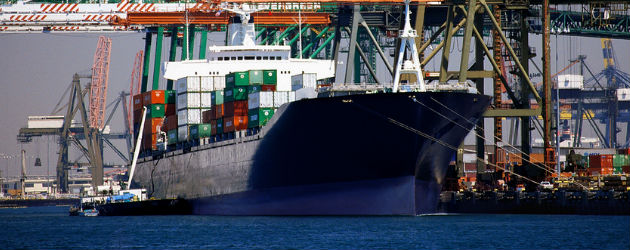Soft NY manufacturing, export data fan new US recovery fears
 Courtesy of Reuters: New York state’s manufacturing sector unexpectedly shrank this month, but business optimism remained relatively resilient, report from the New York Federal Reserve showed on Friday.
Courtesy of Reuters: New York state’s manufacturing sector unexpectedly shrank this month, but business optimism remained relatively resilient, report from the New York Federal Reserve showed on Friday.
The New York Fed’s “Empire State” general business conditions index contracted to minus 2.21 from 1.52 in October. Economists in a Reuters poll had forecast an index of 5.00. A reading above zero indicates expansion. Friday’s was the first negative reading since May.
The report underscores some of the headwinds facing the world’s largest economy, where the recovery remains fragile. A federal government shutdown in October had been expected to drag on growth, but data in the wake of that congressional impasse has been mixed.
The new orders index slid to minus 5.53 from 7.75, and shipments dropped to minus 0.53 from 13.12. Labor market conditions also weakened, with the index for the number of employees slipping to 0.0 from 3.61 in October.
The average employee workweek index also sank to minus 5.26 from 3.61.
Nevertheless, the New York Fed noted that firms remained relatively optimistic in November, following on a buoyant outlook in October. The index of six-month business conditions edged down to 37.51 from 40.76.
The survey of manufacturing plants in the state is one of the earliest monthly guideposts to U.S. factory conditions.
Export prices drop in new wrinkle for global economy
Prices for U.S. exports unexpectedly fell in October, a worrisome sign of global economic weakness, while the cost of imports into America declined due to a sharp drop in the price of oil.
Export prices dropped 0.5 percent last month, the seventh decline in eight months, the Labor Department said on Friday. Analysts polled by Reuters had expected a slight increase in export prices.
 The decline suggests that consumers in crisis-stricken Europe and other major trading partners are struggling so much that American producers have little leverage to raise prices.
The decline suggests that consumers in crisis-stricken Europe and other major trading partners are struggling so much that American producers have little leverage to raise prices.
The European Central Bank, which is struggling to support a recovery, cut interest rates earlier this month in part over concerns the region’s weak economy is weighing too much on prices. The Labor Department’s report also showed that prices for U.S. imports fell 0.7 percent in October, which was a sharper decline than expected.
A 3.6 percent fall in petroleum imports, which was the sharpest decline in over a year, drove the drop in overall prices. However, there were signs that weakness abroad was also fueling price declines.
Prices for imports from Japan dropped 0.2 percent last month, a possible sign that Japan’s extremely accommodative monetary policy was putting downward pressure on its exchange rate and making its exports more competitive abroad.
In a possible sign of Japanese competitiveness, prices for auto imports fell 0.1 percent and were down 1.4 percent in the year through October. The 12-month decline is the biggest drop since the Labor Department began tracking it in 1981.
Category: Featured, General Update










